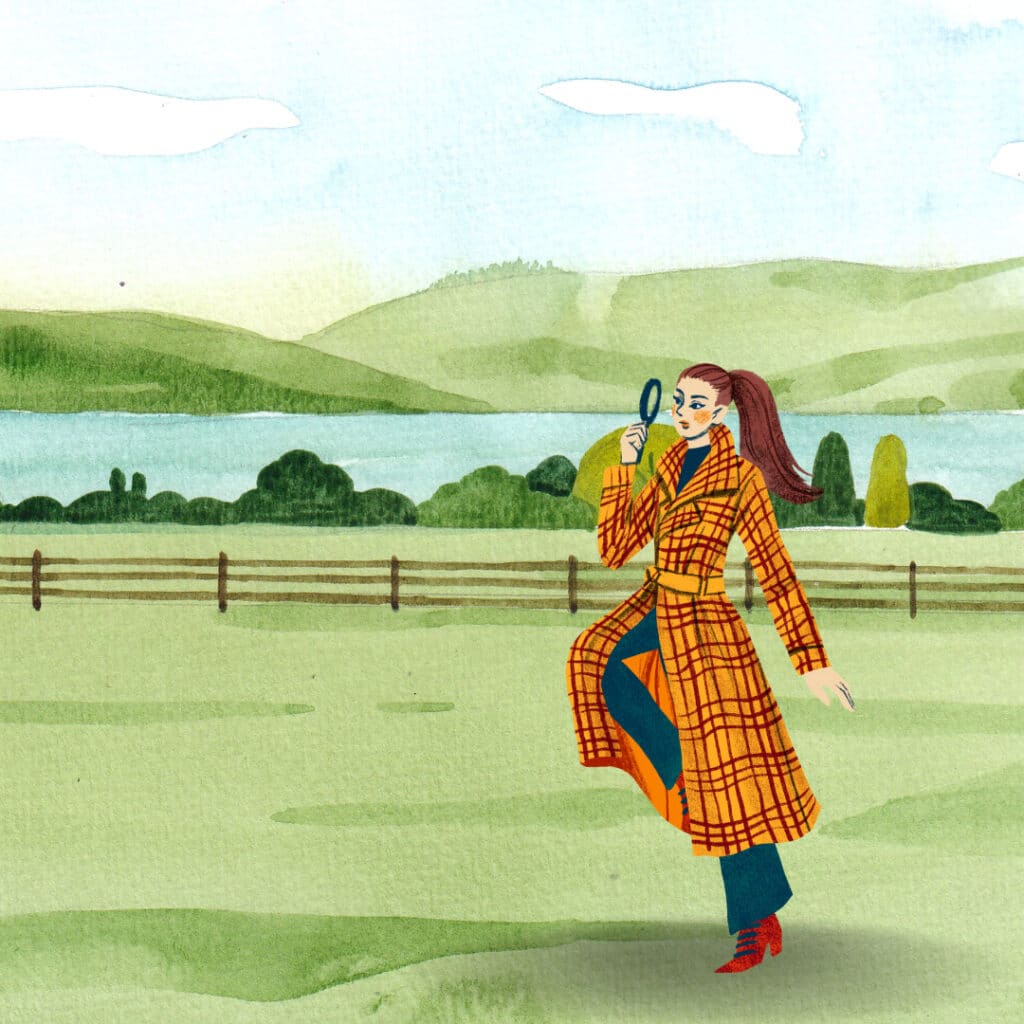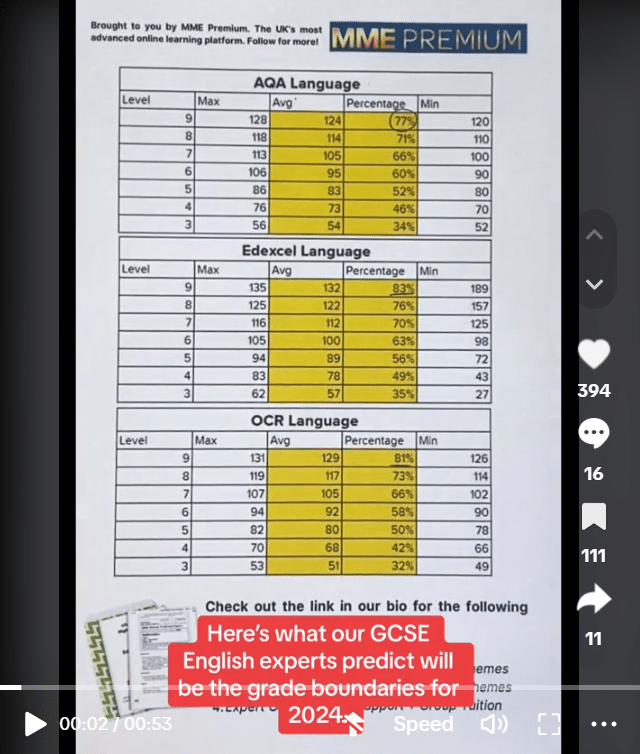Reading: Structure for Comparing Texts
Reading: Structure for Comparing Texts Revision
Reading: Structure for Comparing Texts
“Structure” is what we call the organisation of language within a text.
This might seem intimidating, but don’t worry!
We’re going to learn now how to properly use structure in our exam answers when we need to compare texts.
Using structure in this way is a very important skill to be able to use within your exam – it’s just as important as any language feature, so let’s jump in!
Perspective and Narrative Point of View

Perspective and narrative point of view are two subtly different, but equally important ways in which a text demonstrates how the author feels about the topic they write about.
Perspective is the overall frame that the text has.
For example, a book about the impact of global warming might come from a scientific perspective.
Narrative point of view is the opinion that the author presents about a subject.
For example, a book on global warming might present rising global temperatures as being bad as its narrative point of view.
There are many different methods we can employ in order to work out what viewpoints a text has.
A good one, and perhaps an obvious one, is to make sure we have properly read the text.
The perspective and narrative point of view that a text holds will become apparent simply through reading it, so making sure we have done this properly is key.
Next, we should look in the text for any sentences that directly reference the main topic.
Ask yourself:
- How directly does the text address the issue?
- Is it explicit or implicit?
- When addresses the issue at hand, what kind of structure is the sentence using – is it clear and to the point, or long and drawn out?
Using Structure at Sentence Level

Structure also applies at sentence level.
Looking at a sentence in such a way can be difficult, but mastering the art of sentence level structure will make your answer really stand out in the exam!
Let’s take a look at two lines from a murder mystery novel, the first from the suspect and the second from the detective:
1. “I ain’t sayin’ nothin’. Youse can look all you want, but you ain’t gettin’ a squeak outta me.”
2. “Interesting that you say that, Mr. Silenassino, because I think you’ll find you’ve already said quite enough – take him away boys.”
Here, the writer is using two very different styles of sentence structure to present different emotions and ideas.
The first line is broken up in to two shorter sentences, showing a sense of desperation and quick-thinking: therefore implying deception.
However, the second line takes the form of one longer sentence with a more complex set of punctuation.
This reinforces the intelligence of the detective, and that they have already reached a conclusion, while the suspect struggles to outwit the detective.
Using Structure at Paragraph Level
We can take our understanding of structure to a broader level, and consider how we might compare the structure of two different paragraphs.
What’s important here is to remember that structure is primarily about ordering information, and indeed the order in which information appears on the page, is very important.
When you read a paragraph, think about how the writer is trying to mould your opinion on a topic.
For example:
In a paragraph from a propaganda piece that denies global warming, the writer might try to frame the solutions to climate change as not worthwhile, by first mentioning rising costs:
“Before we even begin talking about how we might even solve these problems, we have to remember that the taxpayer – that’s you – will be paying for it.”
Do you see how the writer uses structure here to make sure the reader understands their point of view?
The writer is mentioning the negatives first, in order to make the reader feel negatively about things that follow.
The same happens across paragraphs as a whole, and it is critical that you learn how to spot this, and compare it with how the other text might use the same technique.
Using Structure at Whole Text Level

Thinking even more broadly, we can apply our understanding of structure to the entire text or extract we are presented with in the exam.
Again, don’t get intimidated! It’s just a matter of taking what we already know, and thinking bigger with it.
For example…
Let’s think about how paragraphs fit together.
The information that we learn in one paragraph influences how we view the next, while the second paragraph can influence the one that precedes it.
So, when we look at two paragraphs in sequence, look for things that are similar between them:
- Ask yourself, why has the writer chosen to include similarities across paragraphs – is it to reinforce a point?
- Perhaps the paragraphs are extremely different – in this case, you want to ask what the differences are, and how each difference makes you feel about the paragraph that follows or precedes it.
Then, once you’ve explored that, broaden this to include the other text we’re comparing.
How does the writer use different paragraphs to influence each other?
Weave this all together, and you’ll have an excellent paragraph of comparison!
Let’s take a look at two paragraphs and apply what we’ve learned:
These two paragraphs are taken from a novel about the Old American West:
“The rider looked over his back as the sun set behind the spires of the mesa behind him. Dark shadows the length of battleships stretched out across the desert and overcame him before the darkness of the night did. As the final amber light of the sun faded away, there was a second of complete, almost purple darkness in the sky, before the mercury shine of the moon dimly lit the path ahead.
Atop his horse he came in to the town. Finding no inn nor willing host, the rider led the mare to an abandoned stable beside the road. Rotting hay matted the hard ground inside. In a corner lit in cool white light by the distant moon, the rider laid his head and slept.”
What can you see in the structure of these two paragraphs that could be analysed? Have a think to yourself before you continue on…
First, let’s look at some of the structural features of the first paragraph.
We can see that:
- The sentences are longer, and that the writer takes a more emotional tone.
- The length of the sentences can be seen as a structural metaphor for the size of the environment the rider is moving through. This is echoed through phrases like “the length of battleships” and “spires of the mesa“.
Now, we can link this in to our analysis of the following paragraph.
Notice how:
- The sentences are shorter
- The elements of ugliness in manmade environments – such as with the “rotting hay” are made apparent.
In our analysis then, we can compare the two structural styles.
For example, we could argue that the differences in the structural techniques used highlights the difference in the opinion on and presentation of both the natural and the man-made world.
Furthermore, we could also argue that the shorter sentence length in the second paragraph is a intended to show of the exhaustion of the rider after a day’s travel.
Direct Comparison
One final thing is to remember to not get caught up in one text too much!
In comparison questions, you’re being asked to do just that – compare!
Comparing is different to simply stating differences between two texts – to really compare, you have to explore what the similarities and differences between texts mean, and how they influence the ideas and emotions that are being presented.
Differences between two texts are critically important to understand, because exploring these differences allow us to really uncover meaning that may not be presented in a literal sense in the text.
By showing how another writer approaches a similar topic, we learn more about both texts!



